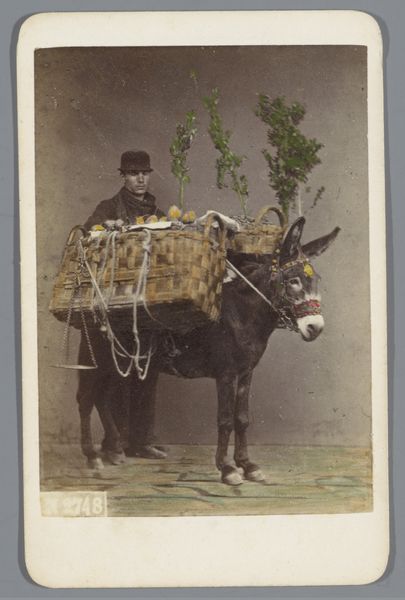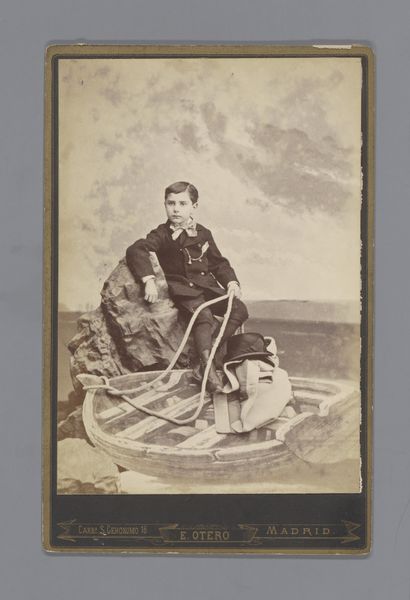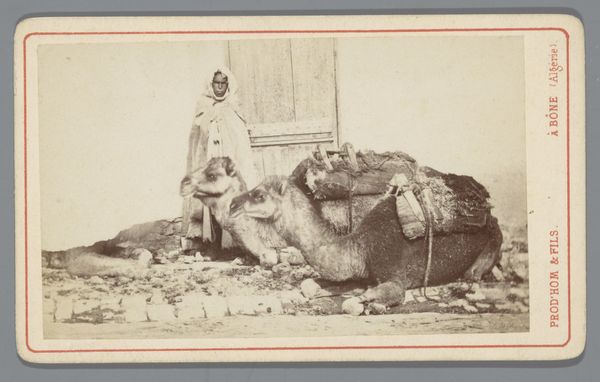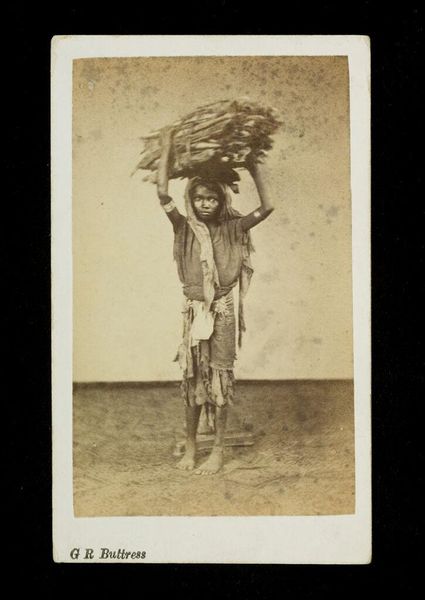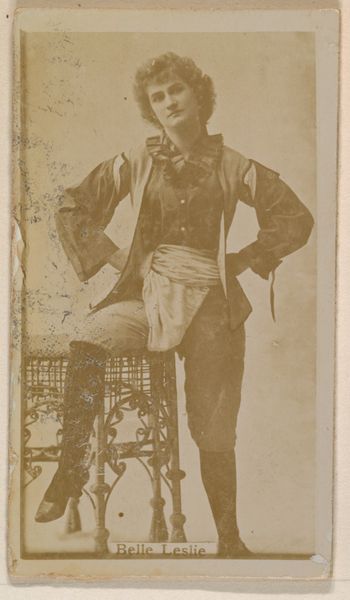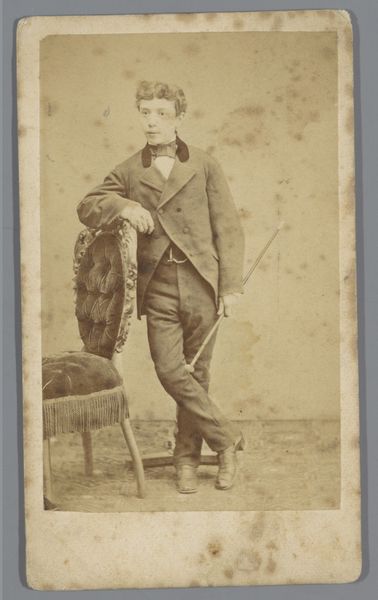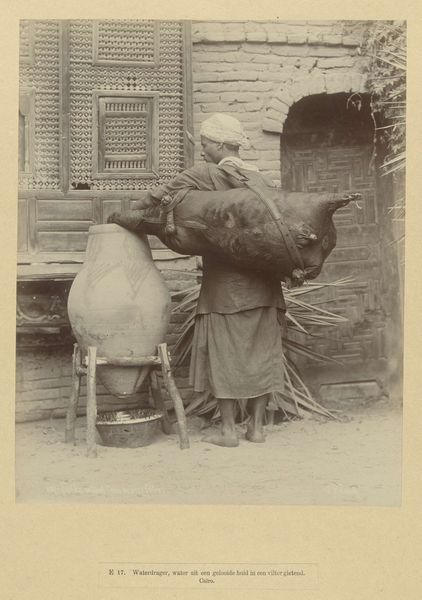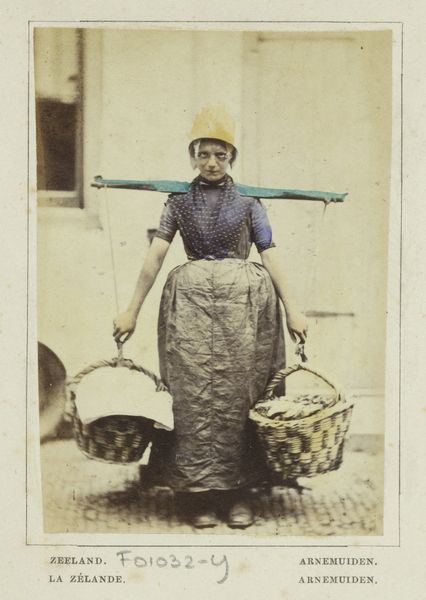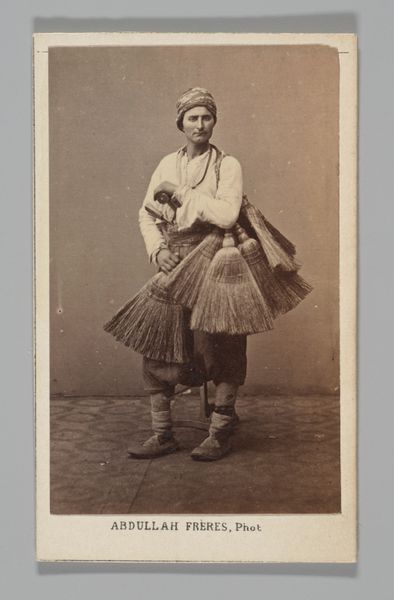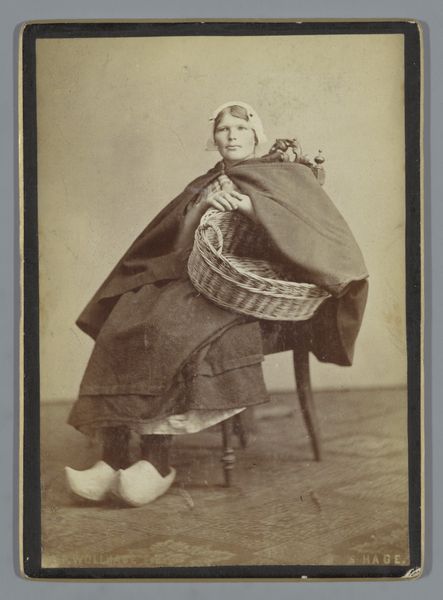
photography, albumen-print
#
portrait
#
16_19th-century
#
landscape
#
photography
#
genre-painting
#
albumen-print
#
realism
Dimensions: height 102 mm, width 65 mm
Copyright: Rijks Museum: Open Domain
Curator: Here we have "Man met bepakte ezel, Italië", or "Man with Packed Donkey, Italy," a photograph created sometime between 1865 and 1888 by Giorgio Sommer. It’s an albumen print, currently residing here at the Rijksmuseum. What’s your immediate impression? Editor: It's… pastoral. In that melancholic, slightly romantic way. The soft sepia tones give it an otherworldly quality, like a memory fading at the edges. Curator: Indeed. The composition, however, strikes me first. Notice how the photographer uses the packed donkey as a central mass, a compositional anchor if you will, around which the narrative unfolds. The verticality of the man, juxtaposed with the burdened, almost drooping posture of the donkey, creates a visual tension, does it not? Editor: Absolutely. The weight on the donkey—literal and metaphorical—contrasted with the man’s somewhat passive stance... it feels…unequal. I imagine life back then involved some tediousness and hardship. The photo doesn't shy away from revealing those burdens. Curator: One could delve into semiotic readings of the burdens the donkey bears: what is its meaning? Are they merely goods for trade, or symbols of a more profound toil? It is, in some senses, a very careful construct playing upon genre painting. Editor: Could be both! To me, the rough textures of the baskets strapped onto the donkey make me imagine sun-baked earth and calloused hands. The dust clinging to their clothes. Curator: The very materiality of the albumen print enhances that. It’s no glossy contemporary image. Its fibers hold history. Editor: And even that small splash of light illuminating the man’s face! His face reads… wistful? The burdens of life have obviously marked him, but he stands tall with… resignation. Is there any sign of the rebellion against social class? Curator: I am always struck by how meticulously these early photographs were constructed, and with what intent. The photograph as artifice. Editor: Agreed. And maybe it's that tension between artifice and life that makes it so compelling, all these years later. To freeze such a candid picture—what a feat. Curator: Precisely, the interplay between these contrasts enriches this image far beyond what it shows on the surface. It’s a complex narrative wrapped within a seemingly simple snapshot. Editor: Absolutely. And even in its stillness, I hear the donkey’s hooves and the whisper of the wind across an Italian landscape. A moment captured, hinting at so much more.
Comments
No comments
Be the first to comment and join the conversation on the ultimate creative platform.
